What's New
Displaying results 851 - 860 of 4052
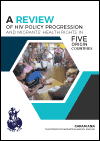
Resource | Publications,
This study intends to provide a brief context of the current situation of migrants’ health rights, primarily by looking at the progression of HIV and AIDS related policies and practices over time. HIV is considered an indicator because it is one of the most sensitive health conditions. As a treatable disease, considerations surrounding HIV extend beyond health and encompass social issues of stigma and discrimination. The aim of this study was to compile information to assess whether there had been any positive changes at the policy level in the protection of migrants’ health rights, as well as to identify remaining obstacles in the protection of migrant’s health rights, specifically as it concerns HIV.
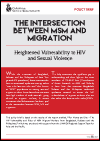
Resource | Publications,
This policy brief is based on the results of the report entitled, “For Money and Sex – The HIV Vulnerability and Risks of MSM Migrant Workers from Bangladesh, Pakistan and the Philippines,” which was produced with support from the UNAIDS Regional Support Team for Asia and the Pacific.
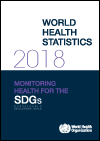
Resource | Publications,
The World Health Statistics series is WHO’s annual snapshot of the state of the world’s health. This 2018 edition contains the latest available data for 36 health-related Sustainable Development Goal (SDG) indicators. It also links to the three SDG-aligned strategic priorities of the WHO’s 13th General Programme of Work: achieving universal health coverage, addressing health emergencies and promoting healthier populations.
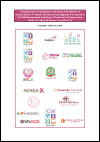
Resource | Guidelines,
This Checklist supports the in-country implementation of the 2017 WHO and UNAIDS Consolidated guideline on the SRHR of women living with HIV. To guarantee the guideline’s effective implementation and fulfil its ground-breaking women-centred spirit and principles, its uptake must include the meaningful engagement of women living with HIV in all their diversity. This guideline was developed with engagement from communities of women living with HIV throughout its development, publication and dissemination. In line with this collaborative process, it discusses implementation issues that laws, policies, health, social and other relevant initiatives and service delivery must address to achieve gender equality and support human rights. The overall objective of this Checklist is to support women living with HIV and community activists who care about the rights of women living with HIV to guarantee effective implementation of the WHO and UNAIDS Consolidated guideline on the SRHR of women living with HIV.
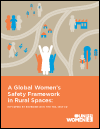
Resource | Publications,
The new global women’s safety framework adapts UN Women’s longstanding initiative on safe cities and safe public spaces for women and girls through incorporating experience in the tea sector in rural spaces. With its strong focus on prevention of violence against women and girls in public spaces, including harassment, the framework helps to build a common understanding in the tea sector that is applicable to other commodity sectors in agricultural value chains.
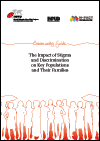
Resource | Publications,
Societal stigma and punitive legal frameworks often severely impede key populations’ rights to raise families free from interference and discrimination. The experiences of key population groups (gay, bisexual and other men who have sex with men, people who use drugs, sex workers, and transgender people) are diverse, and are informed by varying levels of criminalisation, stigma and discrimination, and individual factors such as socioeconomic status, gender, race, and health status. This paper explores these challenges, and provides recommendations for policymakers.
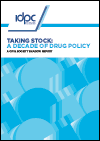
Resource | Publications,
‘Taking stock: A decade of drug policy’ evaluates the impacts of drug policies implemented across the world over the past decade, using data from the United Nations (UN), complemented with peer-reviewed academic research and grey literature reports from civil society. The important role of civil society in the design, implementation, monitoring and evaluation of global drug policies is recognised in the 2009 Political Declaration and Plan of Action on drugs, as well as in the Outcome Document of the 2016 United Nations General Assembly Special Session (UNGASS) on drugs. It is in this spirit that the International Drug Policy Consortium (IDPC) has produced this Shadow Report, to contribute constructively to high-level discussions on the next decade in global drug policy.
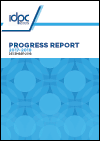
Resource | Publications,
History has shown us that civil society that is empowered and informed is fundamental for fighting inequality, injustice and spearheading transformative social change. Civil society actors hold a mirror up to governments, reflecting back to them the real impact of policy decisions on people and communities. The watchdog role of civil society in being vigilant in policy formulation, implementation and evaluation cannot be underestimated if the interests of society’s most marginalised are to be central to decision making processes. The IDPC Secretariat remains deeply committed to our core mandate and will continue to work alongside our members and partners to fight for civil society space in drug policy forums at the national, regional and UN levels.
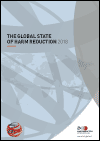
Resource | Publications,
The number of countries providing harm reduction interventions to prevent drug-related death, HIV and hepatitis C has stalled since 2016, according to a new report today from Harm Reduction International (HRI). Of the estimated 15.6 million people who inject drugs worldwide, over half live with hepatitis C, and nearly 1 in 5 live with HIV.
The report, The Global State of Harm Reduction 2018, is the most comprehensive independent analysis to date on harm reduction policy and practice around the world. It reveals that just 86 countries provide needle and syringe programmes (NSP), despite injecting drug use being present in 179 countries. This marks a fall from 90 countries in 2016, with NSPs cut in Bulgaria, Laos and the Philippines.
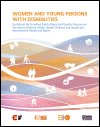
Resource | Publications,
This resource, developed by the United Nations Population Fund and Women Enabled International, provides practical and concrete guidance on the provision of inclusive and accessible services related to gender-based violence (GBV) and sexual and reproductive health and rights (SRHR) for women and young persons with disabilities. While the primary audience is GBV- and SRHR-related service providers, the guidelines are a valuable resource for all stakeholders — including those in government, international organizations, and non-governmental organizations — involved in designing, developing, implementing or advocating for GBV or SRHR services for women and young persons with disabilities.





